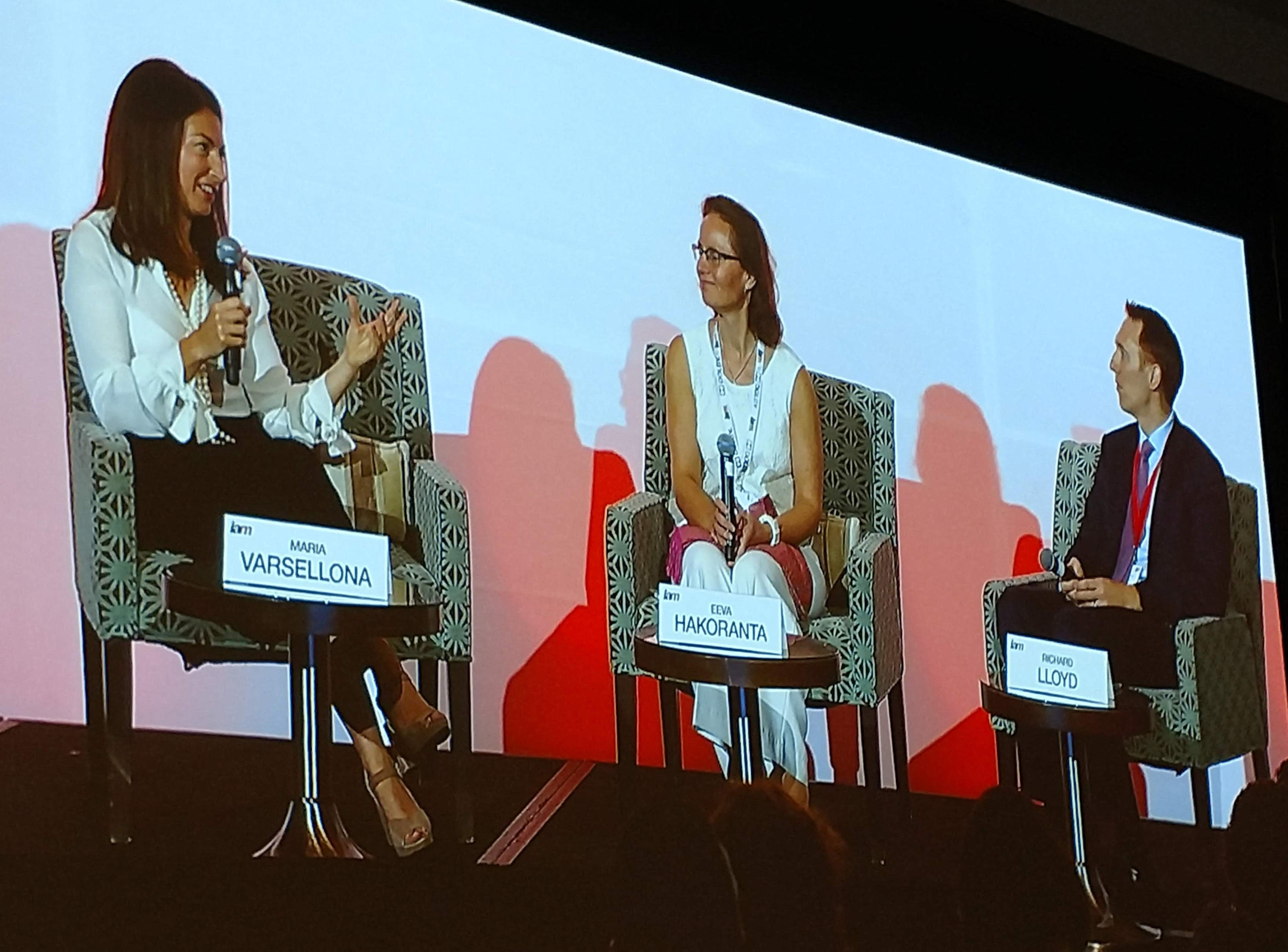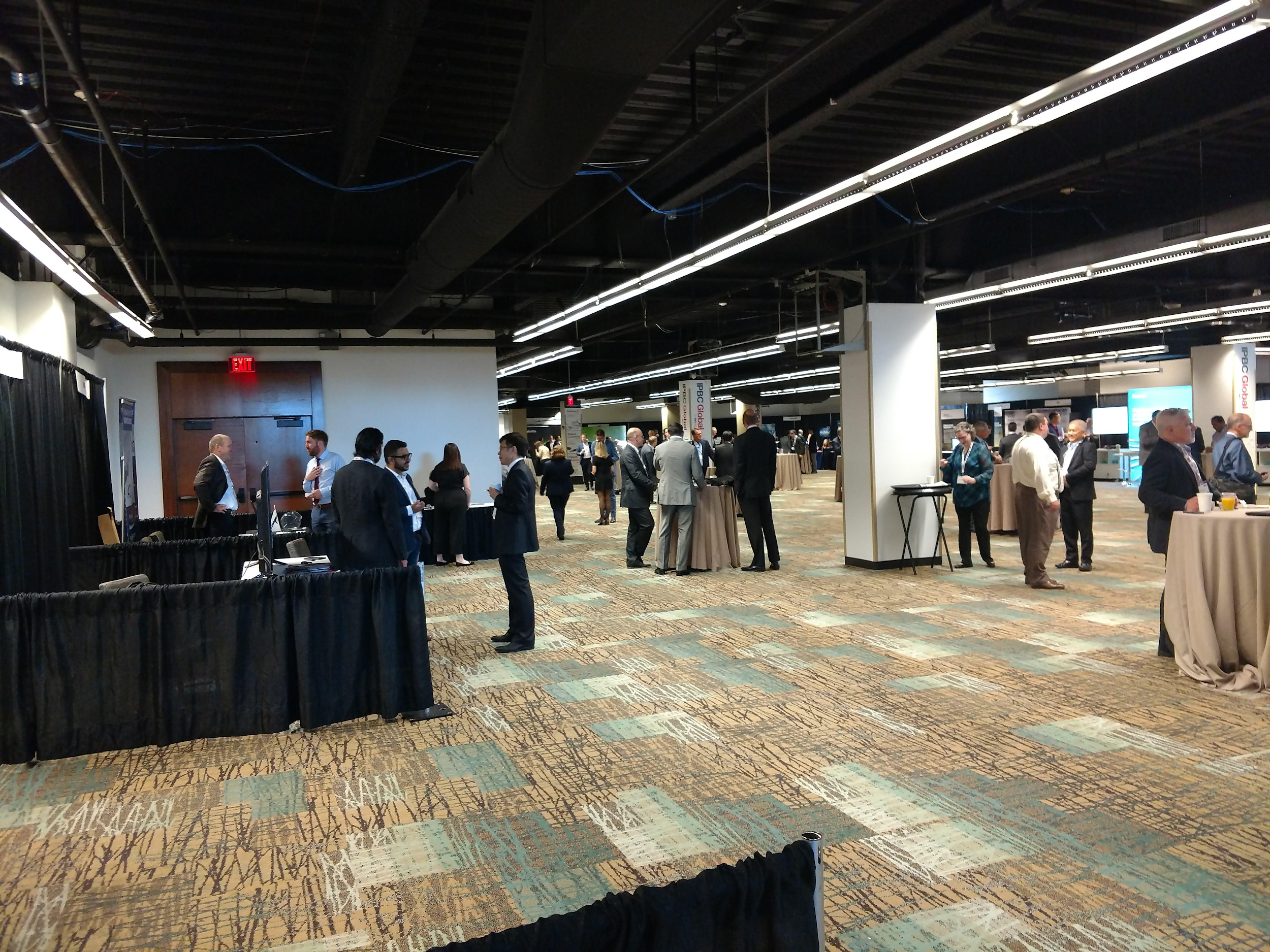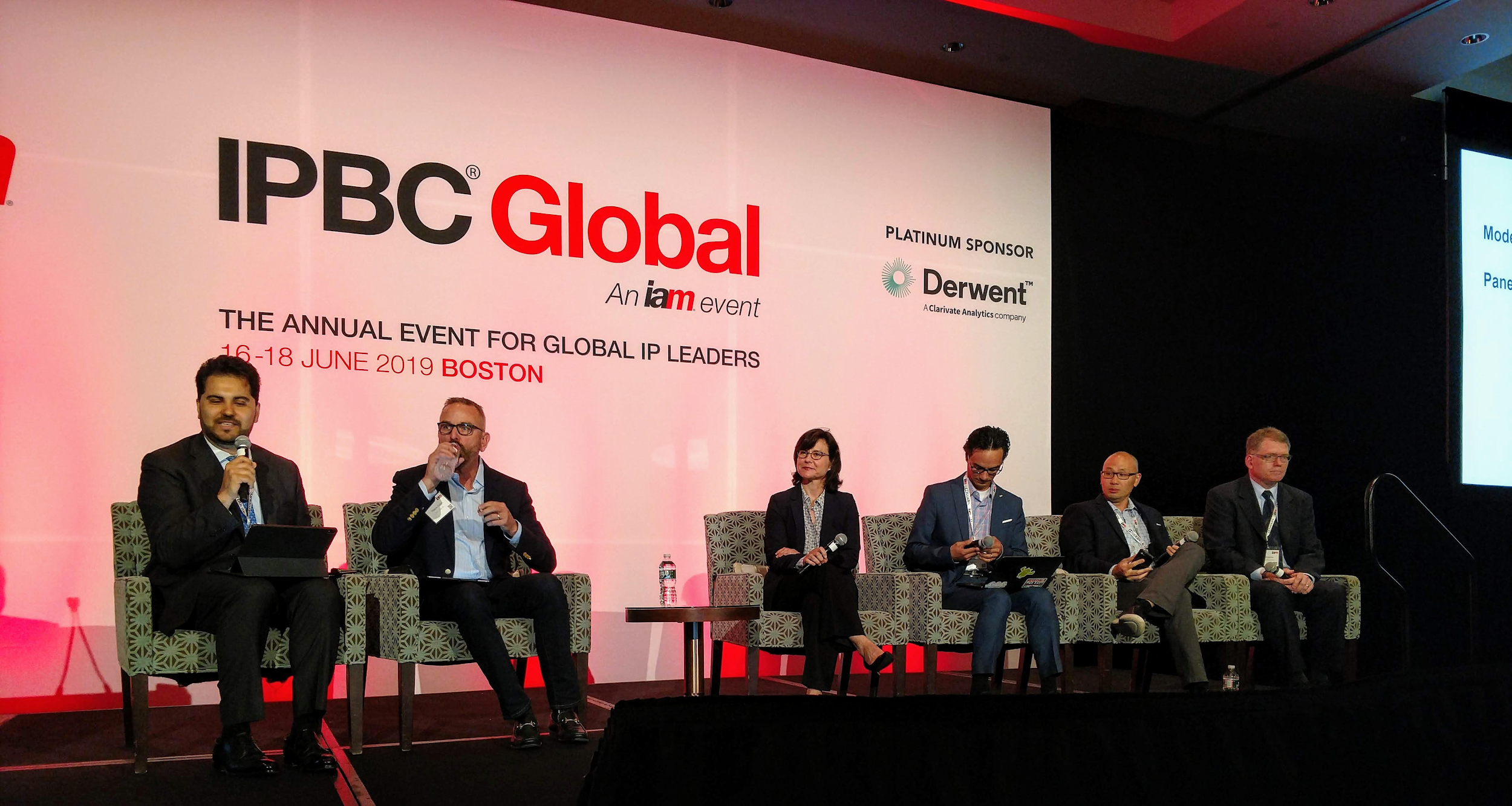IPBC Global was held on June 16 to the 18th in Boston, Massachusetts, hosting senior IP business leaders from around the world. Eric Podlogar, IP Strategy and Valuation Market Lead and Kim Swanson, Director of Sales, attended the event.
Keynote Highlights
IPBC was formally kicked off with a keynote from Maria Varsellona, the soon to be former Chief Legal Officer of Nokia and Nokia Technologies. One of Maria’s main points was related to developing a new “collaborative spirit” within the patent transaction markets, emphasizing that a win-win approach in negotiation discussions is more advantageous to both investors and innovators. She spent a good portion of the keynote discussing 5G, indicating that Nokia was a big player with this technology and had a large interest in protecting and monetizing it.
 Other technologies that were widely discussed were ones associated with the Connected-Car market. Ms. Varsellona referenced the efforts of Avanci, an entity that develops patent marketplaces dedicated to a technology which helps to identify relevant patents and connects potential licensees and relevant patent owners. Avanci has successfully signed up more than a dozen different auto manufacturers to a connected-car patent portfolio – its most recent being Volkswagen. The opposing side of this effort has many concerned that they are not able to identify all the relevant patents, creating fear of subsequent assertion from as-yet-unidentified parties. This is a common complaint about those that are involved with patent pools. The solution is for entities like Avanci to identify as many “investors” as possible and convince them all to join their marketplace. The more the merrier!
Other technologies that were widely discussed were ones associated with the Connected-Car market. Ms. Varsellona referenced the efforts of Avanci, an entity that develops patent marketplaces dedicated to a technology which helps to identify relevant patents and connects potential licensees and relevant patent owners. Avanci has successfully signed up more than a dozen different auto manufacturers to a connected-car patent portfolio – its most recent being Volkswagen. The opposing side of this effort has many concerned that they are not able to identify all the relevant patents, creating fear of subsequent assertion from as-yet-unidentified parties. This is a common complaint about those that are involved with patent pools. The solution is for entities like Avanci to identify as many “investors” as possible and convince them all to join their marketplace. The more the merrier!
In any case, Ms. Varsellona considers litigation as a “value-distraction” exercise, and as something to be avoided. That being said, she maintains the threat of litigation as a means to drive parties to the table. In the end, she suggested that IP licensing is not a zero-sum game and beckons to the audience to answer what the value of IP is.
“IP in the 5G Era”
Next up was the Corporate IP Officers (CIPO) round table. The panel discussed that the value of any portfolio is determined in multiple ways, centering around those that use the technology and those that own technology, very similar to Ms. Varsellona’s keynote, and because of the many technologies and many players, each with their own circumstances, there is no exclusive way to negotiate. The expectation is that there will be more litigations because the rates and other data are not completely transparent.
The takeaway is that it is clear that based on its previous litigious history, and despite the claims of overt collaboration, the 5G wireless industry is set to be the next highly contested technology area. The issues associated with the determination of patent quality and valuation that plagued the advent of smartphones remain unresolved from 2, 3, and 4G. The emerging discord between Huawei and Verizon provides ample evidence of the cloud of litigation.
The Exhibit Floor
This event was definitely driven by relationships. Unlike past years, there was an explicit interest in IP data and how it can be used to supplement decisions and most of the topics discussed in the sessions supported this point. There were many visitors to the ktMINE booth that we had not connected with before yet shared a genuine interest and need for our product. The activity at the booth was steady and easily managed, but most of the valuable conversations happened either in the hallways or at the after events.

Tuesday CIPO Session
On Tuesday, there was another session involving CIPOs from Juul, Thermo Fisher Scientific, Google, Facebook, and Uber.
 Throughout this panel, they discussed a number of scenarios that CIPOs are likely to face, these included:
Throughout this panel, they discussed a number of scenarios that CIPOs are likely to face, these included:
- How to handle Management’s decision to pare down an IP portfolio
- Decide how to invest an additional 5% increase in IP budget
- How to view patent protection in China
- How to address changes in IP strategies brought on by legislation or new case law
In each scenario, the process is largely the same. First, the CIPO must understand the IP portfolio and how it is used. Next, there is an iterative process involving how to clear the gap between the current IP position and the desired end state. Ideally, there is no dead weight, meaning each asset has an identified purpose. Data is critical to these efforts, and examples of historical success are necessary for justifying a strategy. It was noted that the “value” of any portfolio is dynamic and otherwise non-durable. Extensive analyses of potentially impactful patent portfolios are required, and with a very small “time-to-action”, the analysis must be performed on-the-fly. The data must be sound enough to help eliminate any emotional bias associated with a favorite product or feature or technology.
Large corporations employ data science teams armed with AI and machine learning tools to aid in identifying and improving patent quality. Their results enable strategies to be recalibrated to align with shifts in the business.
“Preparing for the Future”
The final session was related to preparing for the future, a panel discussion with dignitaries from Uber, Aon, University of New Hampshire, and Univercells. In this session, the panel predicted that while today patent valuations are unbound, in the future, they will be predictable and manageable. Machine learning is transforming the legal industry by providing tools that enable a more data-driven legal practice. That said, data visualization continues to be a hurdle.
Technologies have helped close the gap between business data and IP/legal data, providing more compelling strategy justifications. Additionally, they aid in valuation in that they help determine when to stop investing, either through filing or through acquisitions. The direct question that must be answered is “How much more protection is the incremental patent going to provide?”
There is still a need for business professionals to acquire legal acumen and for legal professionals to become more business savvy. The panel went on to say that some information sources that could close this gap are slow to innovate. For example, legacy libraries cannot provide the “information literacy” afforded by analytical tools like Tableau, or even Excel. These tools can help clarify the probability of encountering risk.
In Closing
If the sessions at IPBC are any indication, the demands for IP data will continue to grow. Machine Language, Artificial Intelligence, and other tools enable multiple data sets to be more readily available. The ktMINE platform serves to enable key decision makers to consider all viewpoints and ultimately connect the Business arc with the Legal arc; accessing the data and providing it in a form that makes the relevant insights accessible.
See you in Chicago next year!





